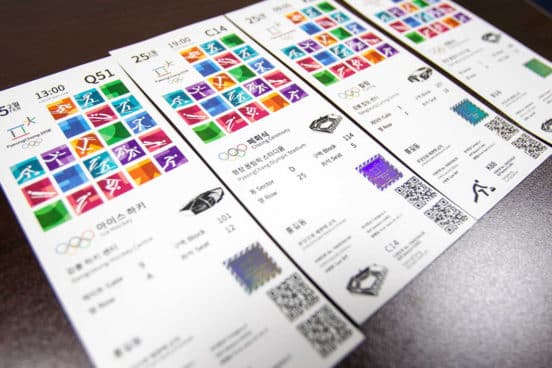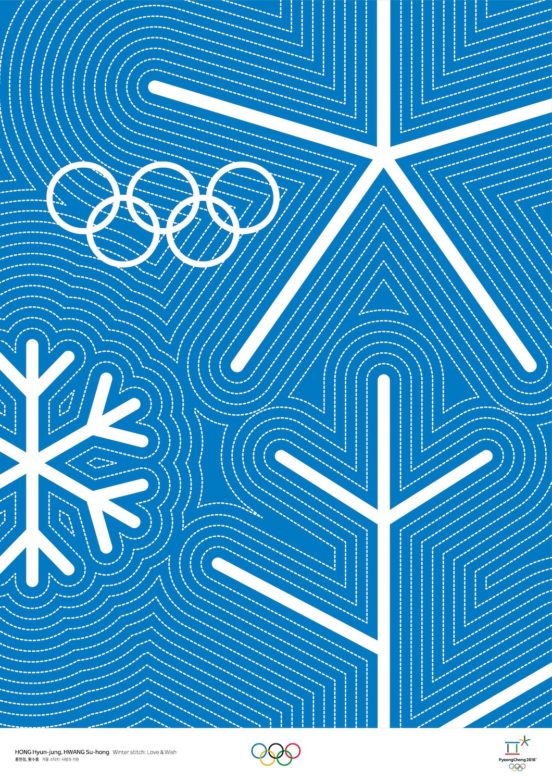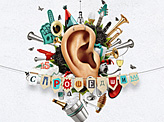The Winter Olympics are less than 100 days away and South Korea is celebrating by naming the winners of its post contest and releasing the design of its commemorative tickets. PyeongChang is hosting the country’s second-ever Olympics in February of 2018. The burgeoning design mecca of Seoul hosted the 19888 Summer Games. The Winter Paralympics will follow on March 9-18.
South Korea’s Ministry of Culture, Sports and Tourism is hosting the “Art Posters for the Olympic Winter Games PyeongChang 2018” exhibition at the National Museum of Modern and Contemporary Art (MMCA) in central Seoul from Nov. 2 to Dec. 3. The exhibit is in association with the Korea Craft & Design Foundation (KCDF). There will be eight posters on display at MMCA, as well as videos showing how the posters were made. The MMCA will also present a retrospective on Olympic posters since 1912.
South Korea opened a competition for Olympic posters, which ended in July. the eight official winners had their designs selected as official posters for the PyeongChang Olympics. They will officially be registered as cultural assets in the International Olympic Committee’s archive, which is a prestigious honor for the eight winning teams.
There were 205 entrants into the poster competition. Entrants were judged on four main criteria:artistic value; presenting the idea of the Olympics in a new light; subtly expressing the soul of Korea; and highlighting the beauty of Gangwon Province, where Pyeongchang is located.
The eight teams were also given a monetary award. The winners are: Kim Jong-wook, Kim Ye-seul, Jeon Chang-hyun, Park Sung-hee, Kim Joo-sung, Kim Jae-young, Hong Hyun-jung with Hwang Su-hong, and Ki Eun with Ha Dong-soo.
The winning posters embody South Korean culture as well as the Olympic spirit. For example, Winter Stitch draws on the local craft tradition of local women in Gangneung Province to imagine a “winter stitch” delivering wishes for a successful games. A pouch with colorful stitches was used to create this abstract pattern which is set against a winter background that includes snowflakes, flowers, trees and the Olympic rings. The artists are Hong Hyun-jung and Hwang Su-hong.
In the poster PYEONGCHANG, GANGNEUNG, JEONGSEON AND WINTER, the artist uses the basic morphemes in the Korean alphabet to serve as units of geometric shapes. By rotating the morphemes or adding strokes, a visual image was created that combines the name of each district where the PyeongChang Winter Games are held. The effect is the very picture of abstract modernism. The symbols also resemble the mountains and valleys of the local area, and falling snow completes the image. The artist is Kim Joo-sung.
Meanwhile, the ticket designs were unveiled just as the Olympic flame arrived in the host country. The tickets encompass 29 designs and 26 sporting competitions, plus the Opening and Closing Ceremonies. The sports-specific tickets contain a pictogram for each sporting competition. The Opening and Closing Ceremony tickets show a snowflake pattern, inspired by Korean alphabet, Hangeul, which is also incorporated into the Olympic medal design.
The ticket is an opportunity to commemorate the experience of attending the Olympics. They become memorabilia of the event for fans taking advantage of this once in a lifetime chance to see world sporting events.
The President of the PyeongChang Olympics Committee said the designs were intended to embody “our message of peace and harmony for the Games.”














